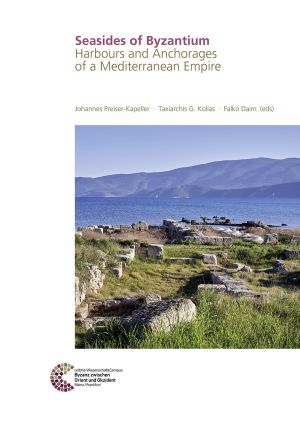Ginalis, Alkiviadis
Seasides of Byzantium: Harbours and Anchorages of a Mediterranean Empire
In recent years, interest in the study of maritime installations and networks in the Roman and Byzantine Mediterranean has increased considerably, as documented by various projects and publications.
The conference »Seasides of Byzantium. Harbours and Anchorages of a Mediterranean Empire«, from which the papers collected in the present volume emerged, took place in Athens in 2017 as part of a cooperation between the DFG-funded Special Research Programme (SPP 1630) »Harbours from the Roman Period to the Middle Ages« and the National Hellenic Research Foundation. It united historians, archaeologists and geoarchaeologists to explore harbours and anchorages as core maritime infrastructure to the Late Roman and Byzantine Empire.
General phenomena such as the organisation of the Byzantine navy and its operations or lighthouses are discussed in this volume as well as new geoarchaeological research methodologies in harbour archaeology. Most contributions in the present volume examine case studies for the most important maritime core region of the Byzantine Empire, the Aegean. This sea connected the remaining provinces of the empire in Southeastern Europe and Asia Minor after the loss of Syria, Palestine, Egypt, and North Africa to the Arabs in the 7th century AD. In addition to technical and geographical aspect, the studies in this volume make clear that we need to explore more and more the social embedding of the seasides of Byzantium to understand their dynamics in all their complexity.
Schiffe und ihr Kontext: Darstellungen, Modelle, Bestandteile – von der Bronzezeit bis zum Ende des Byzantinischen Reiches
Seafaring was extraordinary important in Antiquity and the Middle Ages for the economy and the wielding of power. It also provided contact between distant places. Ships were on the one hand decorated and ornamented and on the other hand they were frequently objects of depictions which could range from sketchy graffiti to three-dimensional reproductions. The contexts of the depictions encompass different areas, such as public and private representation as well as religion.
This Volume assembles 18 articles that have been presented on the occasion of an international workshop in 2013. Different groups of material ranging from the period of Bronze Age until the end of the Byzantine Empire were presented as well as the development of ship-building and navigation. The depictions of ships which have investigated scanty until now were the main target of the workshop.








